


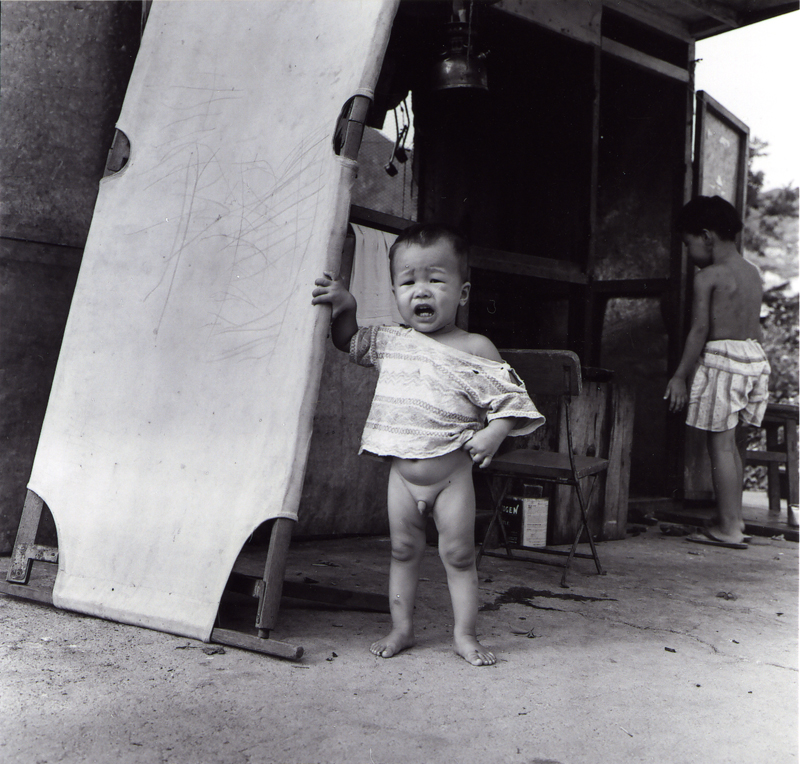
A child not properly clothed lived with his parents in impoverished squatter.

The supply of fresh water was a major problem facing boat people. They solved the problem by buying clean water on the land.
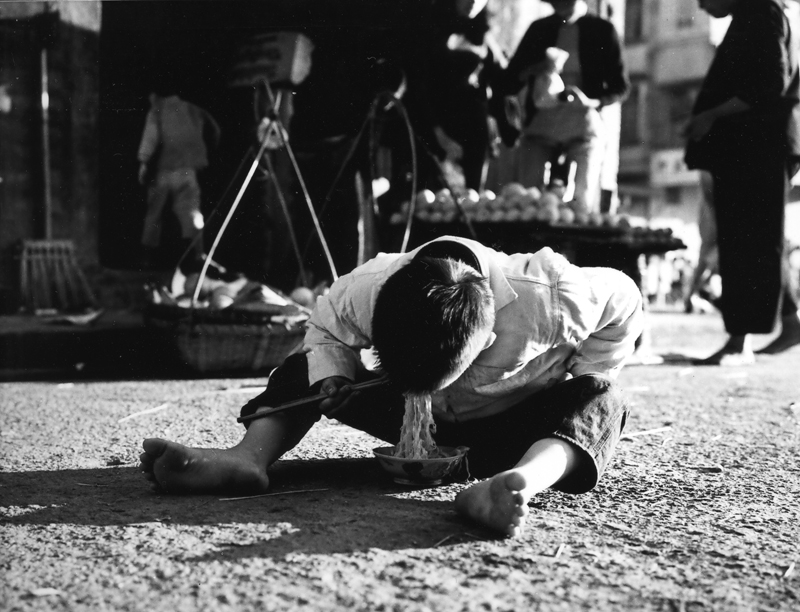
Child having noodles as her family works. The hawker took his child to work because no one was at home. The hungry child bought noodles nearby; but the bowl was too hot and she had to place it on the ground. This picture made use of a telephoto lens and the photographer was not easily noticed; the shallow depth of field separate the subject from the background.
挑販帶兒生活艱 幾根粗麵作盤餐
房租伙食多煩惱 累月經年關過關
用膳體增益 何為辛苦食
苟非雜技人 定是練腰力
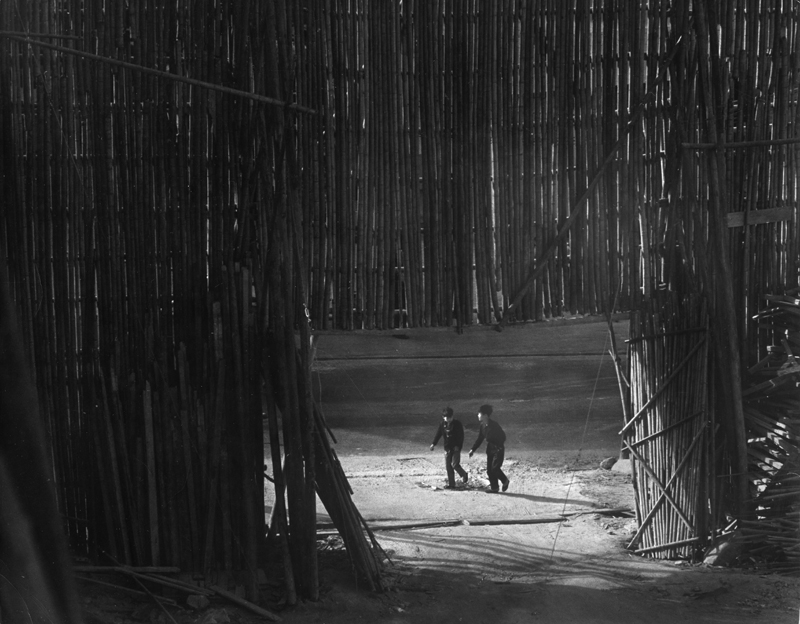
Caisson works were conducted at the site and large rocks were demolished. Safety works were implemented to avoid shrapnel. The bamboo scaffolding in the picture was a large construction composing mainly horizontal lines; the diagonals were not much interference in this lighting. The people, though dressed in dark, were rather outstanding under the strong lighting.
編竹為牆形險隘 驟看疑是結城寨
拓荒爆破鏟山丘 設棚遮攔防石塊
新廈相連喜落成 陳樓陸續遭淘汰
路經工地莫流連 更勿企圖跨警戒
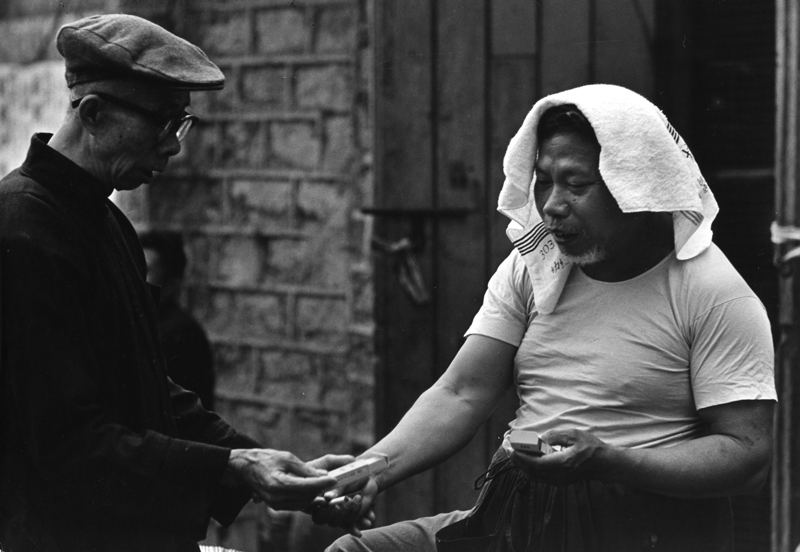
Passing cigarette is a common social etiquette between the adult male.
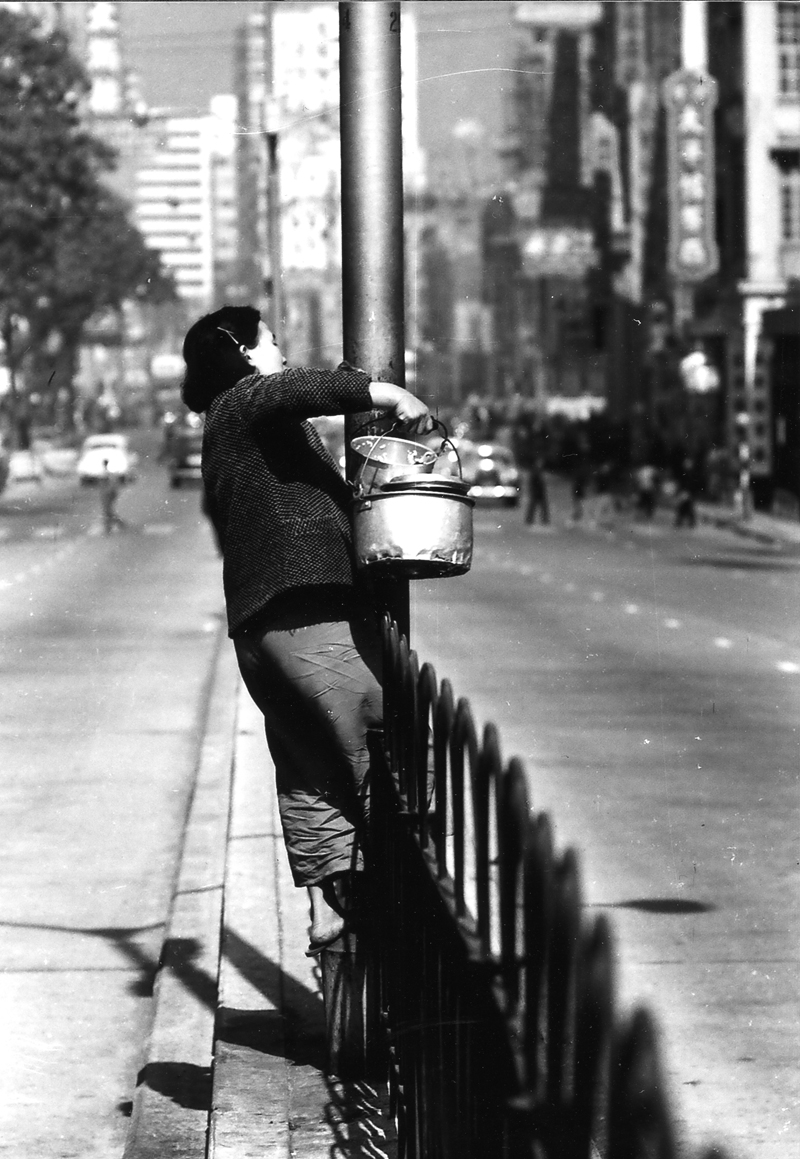
Jay walker in Nathan Road. This set of photographs was taken in Nathan Road, Yau Ma Tei of Kowloon near Pak Hoi Street. At the time, the Gascoigne Road Flyover has yet to be built and there were spaces in the middle of Nathan Road for parking vehicles. Some had founded the crossing to be too distanced from the traffic lights, and had created this “shortcut” where pedestrians could cross the road using the gap between the railings and lamp post. This practice was widely imitated. Because of the danger it posed, the government removed the central parking space and built railings to separate the different lanes and traffic lights, and later built today’s pedestrian flyover and tunnel-crossing to ensure pedestrians’ safety.
婦人愚昧好心腸 協肋越欄喜氣洋
雖謂無私唆鋌險 警員票控便遭殃
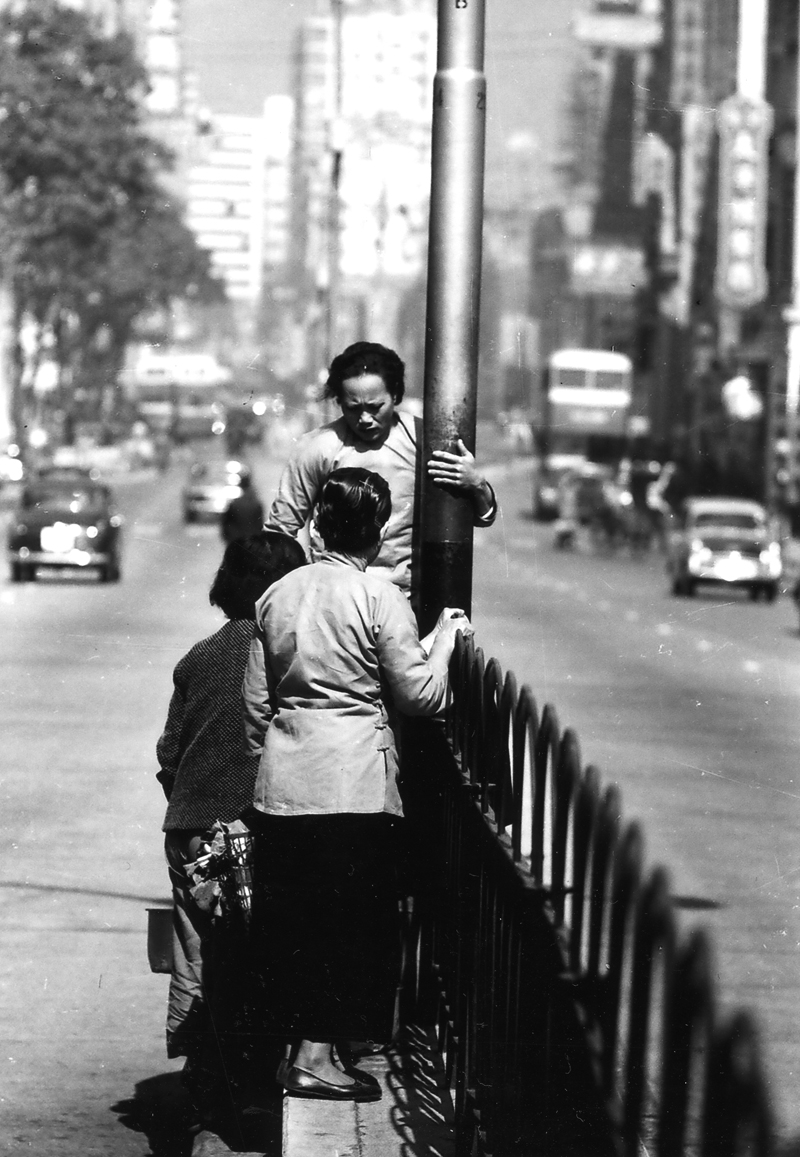
This set of photographs was taken in Nathan Road, Yau Ma Tei of Kowloon near Pak Hoi Street. At the time, the Gascoigne Road Flyover has yet to be built and there were spaces in the middle of Nathan Road for parking vehicles. Some had founded the crossing to be too distanced from the traffic lights, and had created this “shortcut” where pedestrians could cross the road using the gap between the railings and the lamp post. This practice was widely imitated. Because of the danger it posed, the government removed the central parking space and built railings to separate the different lanes and traffic lights, and later built today’s pedestrian flyover and tunnel-crossing to ensure pedestrians’ safety.
婦人愚昧好心腸 協肋越欄喜氣洋
雖謂無私唆鋌險 警員票控便遭殃
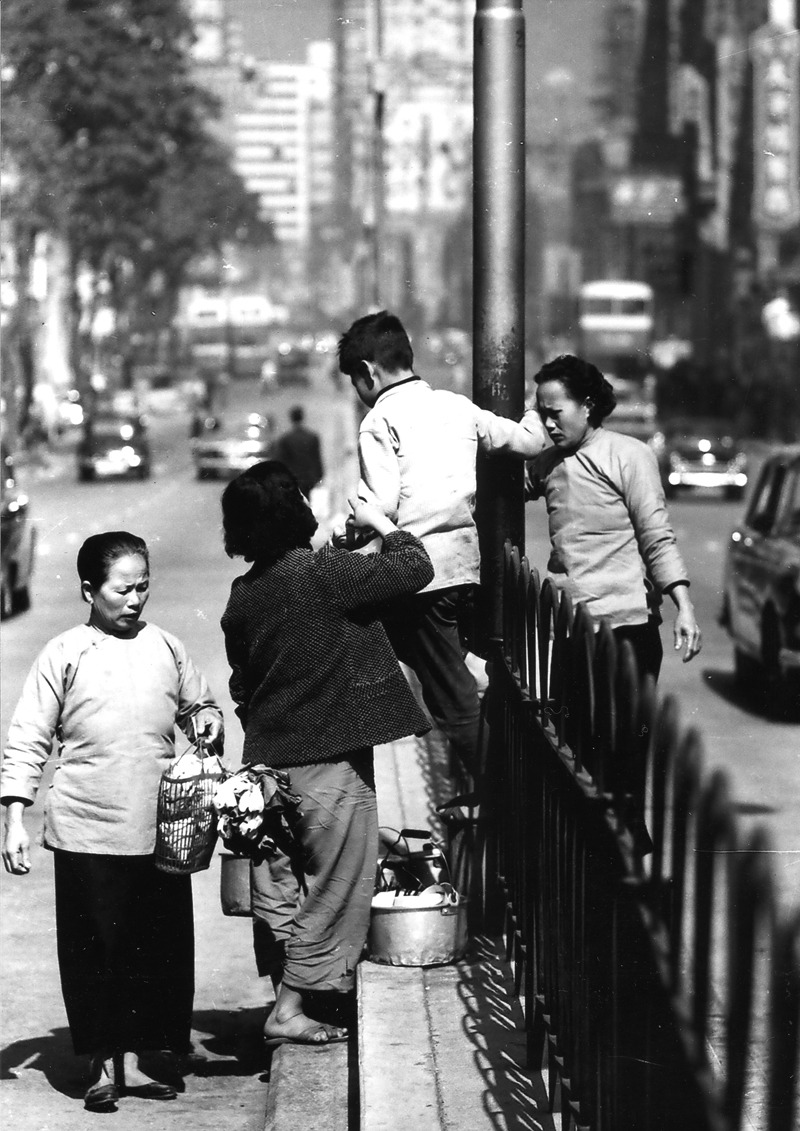
This set of photographs was taken in Nathan Road, Yau Ma Tei of Kowloon near Pak Hoi Street. At the time, the Gascoigne Road Flyover has yet to be built and there were spaces in the middle of Nathan Road for parking vehicles. Some had founded the crossing to be too distanced from the traffic lights, and had created this “shortcut” where pedestrians can cross the road using the gap between the railings and the lamp post. This practice was widely imitated. Because of the danger it posed, the government removed the central parking space and built railings to separate the different lanes and traffic lights, and later built today’s pedestrian flyover and tunnel-crossing to ensure pedestrians’ safety.
婦人愚昧好心腸 協肋越欄喜氣洋
雖謂無私唆鋌險 警員票控便遭殃
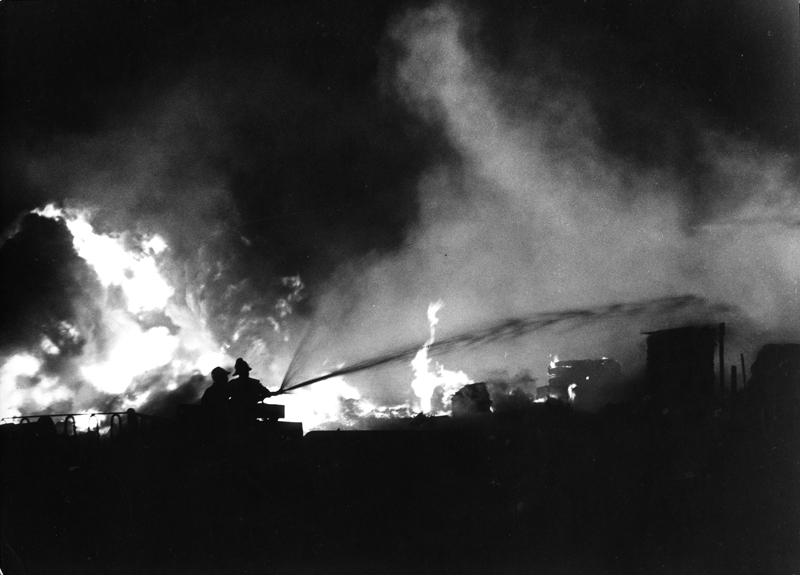
Squatter fires and firemen putting out the fire. In the past Hong Kong had numerous squatter house areas and each fire burnt down many houses. To avoid hindering the work of the firemen, the picture was taken outside the cordons. The fires accentuated the silhouette of objects but all other things lack gradation. In the picture the fireman poured water over the fire and the line of water accentuated the ferocity of the fire.
救援號角夜悲鳴 車隊疾馳心悖驚
未悉誰家逢不幸 寒風唬唬動哀聲
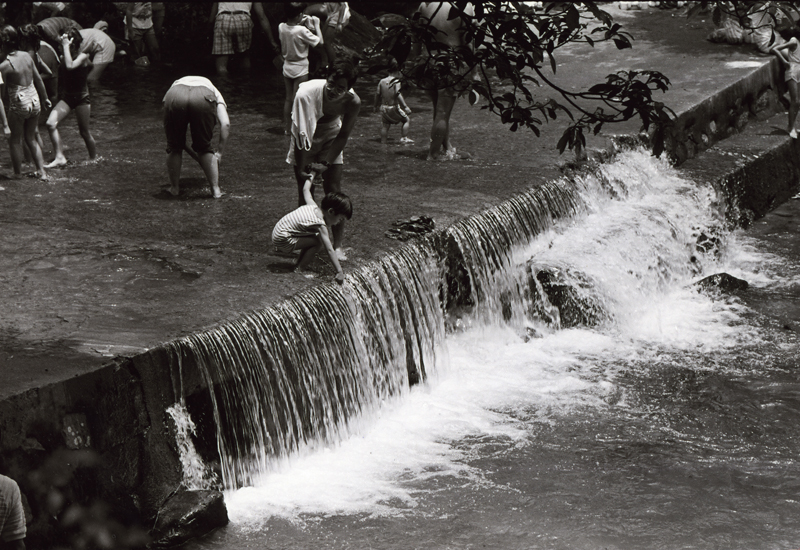
Children playing water at the stairs after the rain and enjoying a cool of summer.
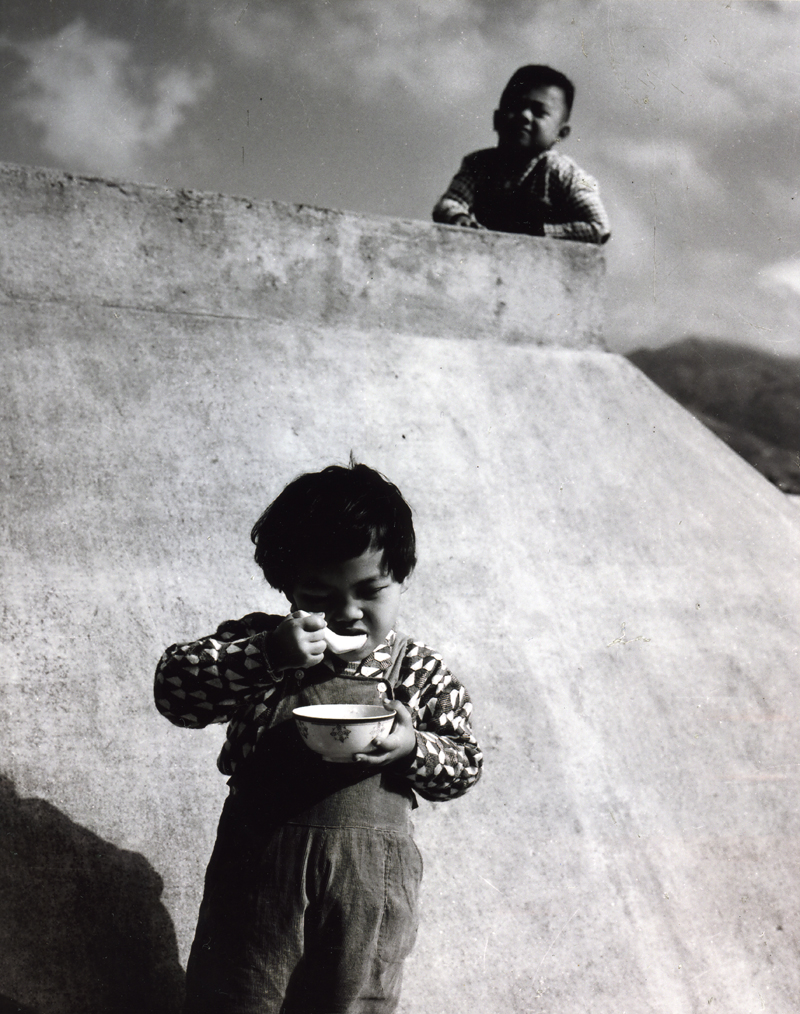
Interesting photo of children at the resettlement area. The picture was taken at a 7-storey building of the resettlement area. The children were eating in front of a rough concrete building and looked anything but rich, but they were growing healthily. The girl was enjoying her food as a boy came from behind the stone railings and looked at her hungrily.
海錯山珍營養高 清茶淡飯可同途
豆羹翅肚雖差異 體健精神勝老饕
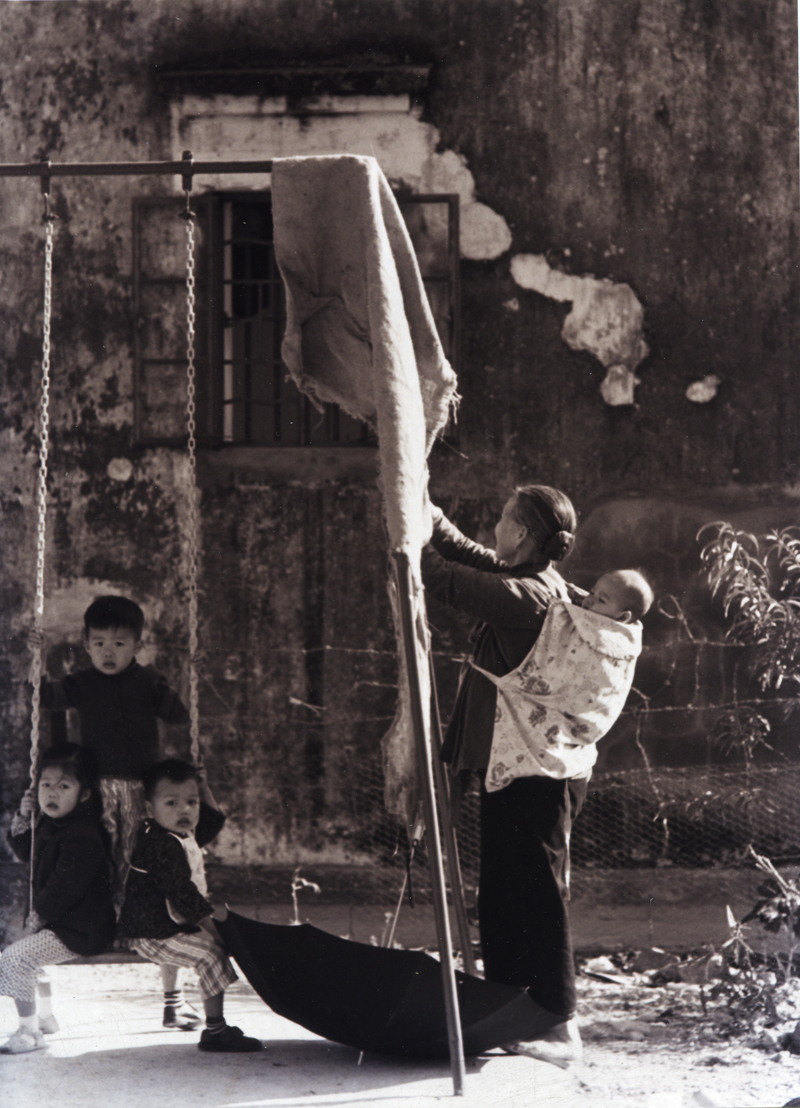
The birth rate of Hong Kong was significantly high in post-war period, thus those grandparents took the responsibility of looking after the children.
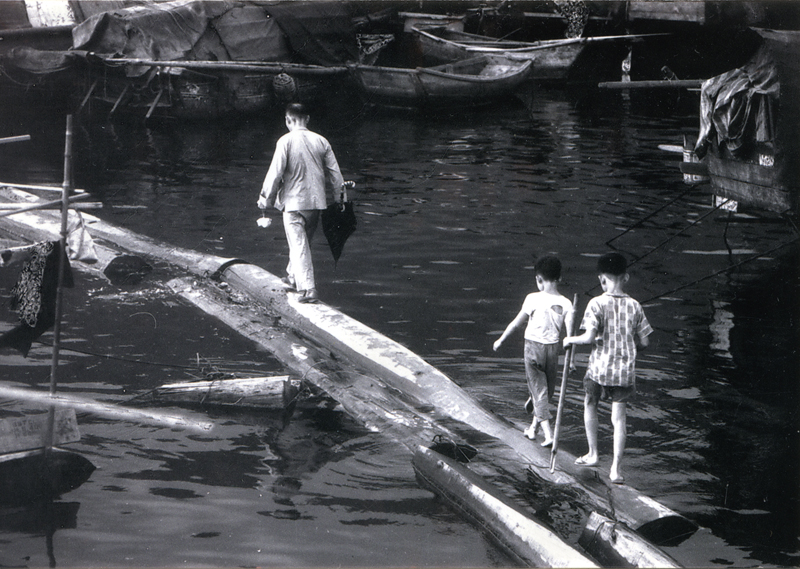
The fisher folk used timber as floating bridges. Photographing themes about water require back lighting to create a glittering effect and result in a bright reflection. In the 1960s the landfills in Cheung Sha Wan were used for temporary timber storage. The huge timber pieces were tied together but because of their unequal weight they did not serve as steady support. The timber was stained but remained premium material.
桴排分組若浮臺 巨木接連利往來
暗啞無光疑腐朽 看雖貌醜實良材

Fishermen’s fishing life in shallow sea at Tolo Harbour.
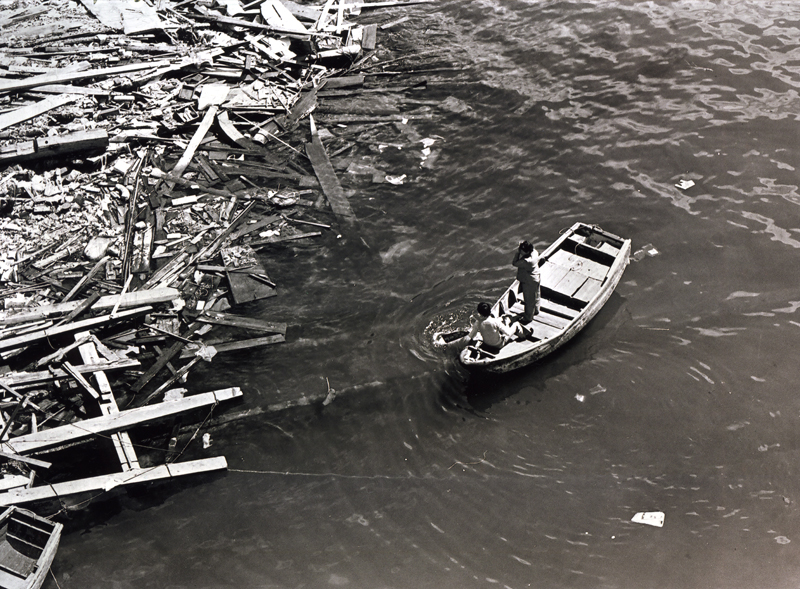
Waste timber floating on the water at Aberdeen.
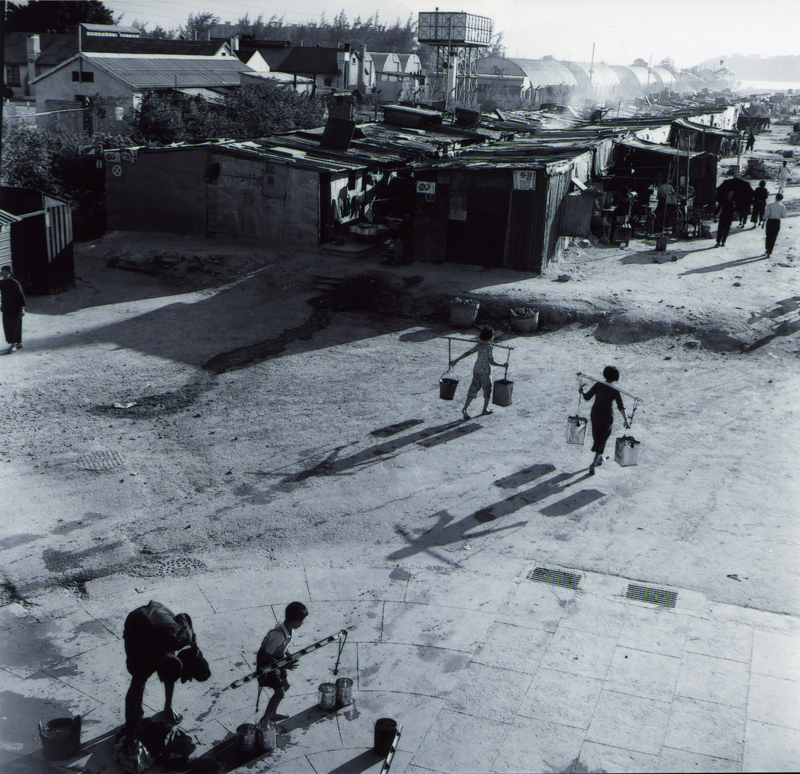
Survivors of the fire built houses on open ground and residents have to get water from the outside. At the time landfill works had yet to begin in Cheung Sha Wan; at the back was Shumshuipo Barracks.
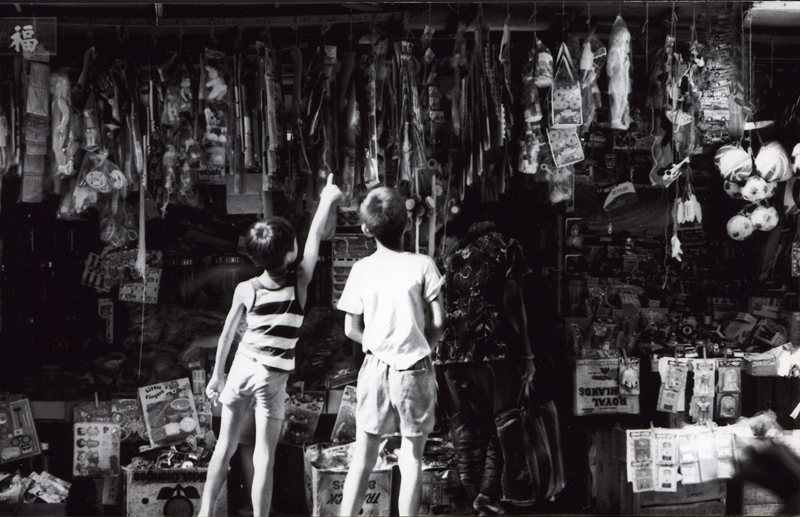
Shopping in toy store is the collective memories of childhood in the 1970s.
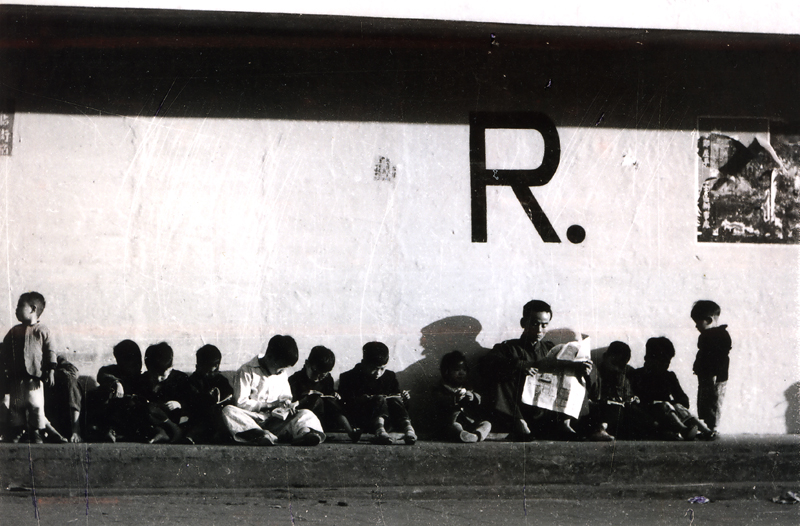
Children reading comics at a corner of Lei Cheng Uk Estate. In the old days comics featured line drawings to attract children. The photo was taken at Block R of Lei Cheng Uk Estate, reminding one of the English word “Reading”. The child who was reading while standing made an interesting contrast with the seated reading adults.
圖書租閱在街頭 戶外教材分劣優
年幼小童趨若鶩 身為家長預籌謀
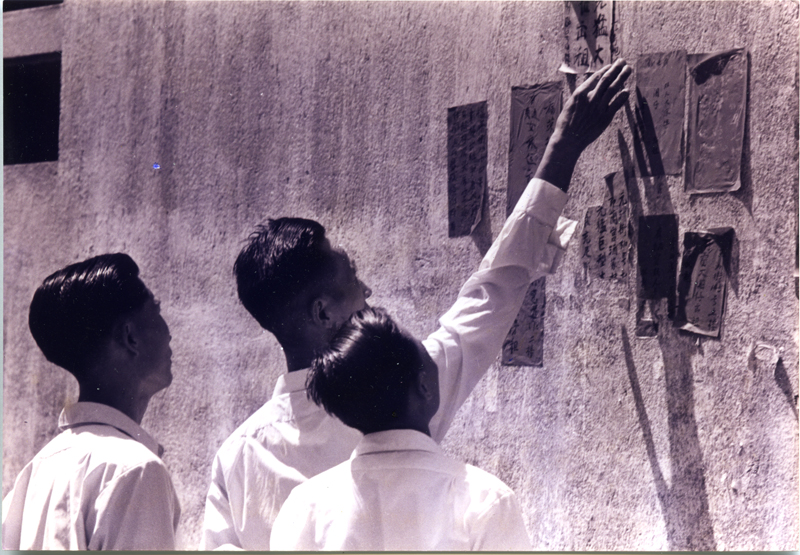
Room-to-let poster outside the Bus Depot.

Labourers lived in a resettlement area in To Kwa Wan.
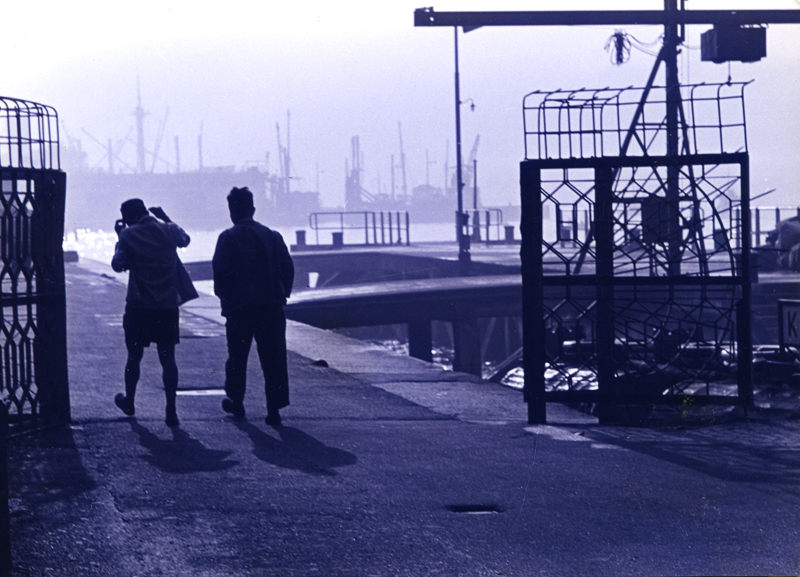
Former KCR Tsim Sha Tsui Terminal. The cargo gateway at the side of the clock tower was used for unloading cargo. Not far away is the Jardine Wharf Pier, commonly known as ‘Big Bag of Rice’, where cargo ships often unloaded cargo. The location of the railway has been turned into the present day Cultural Centre, Space Museum, Art Museum and New World Centre. In the past a lot of manpower was needed and unemployment was non-existent. In the new era, factories moved northwards to mainland China and unemployment soared, affecting the social stability.
國際名都待轉型 投資科技納精英
下崗失業難安置 路走回頭是救星

Impoverished residents living in squatters at the hillside. With the population increasing, many flats in Hong Kong were turned into cubicle apartments but even then social needs were not met. Those with low-income could only build squatters at remote areas and the government turned a blind eye. There was no water and electricity, and at night the house was illuminated by kerosene lamps. Water was taken from a nearby stream, or from a public tap some distance away. In the picture the woman was breastfeeding her child with a hen beside her, adding a touch of reality to the existence of their home.
郊野安居遠世塵 非圖幽雅獨離群
難棲市內租昂貴 日夕奔勞帶淚痕
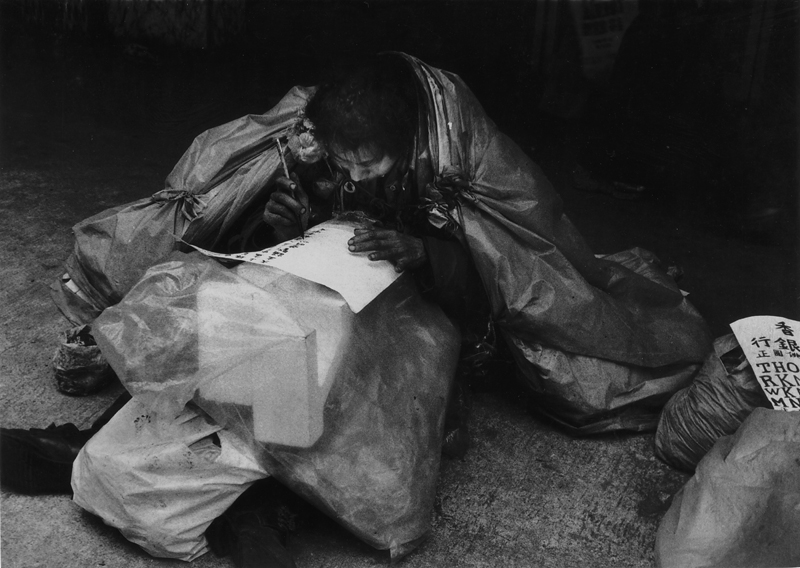
Ho Sau discovered by accident a calligraphy-writing beggar on the streets. As products of social ills, beggars are filthy and are undesirable photography material. The “refined” beggar in the photo was practicing calligraphy and presented a intriguing picture. The beggar turned out to be a mental patient, who seemed to be disturbed by his future and was therefore studying for personal gain.
雄心奮志欲高攀 主考無情雖過關
勤習勵精圖補拙 卻憐未竟已痴殘
|
|
